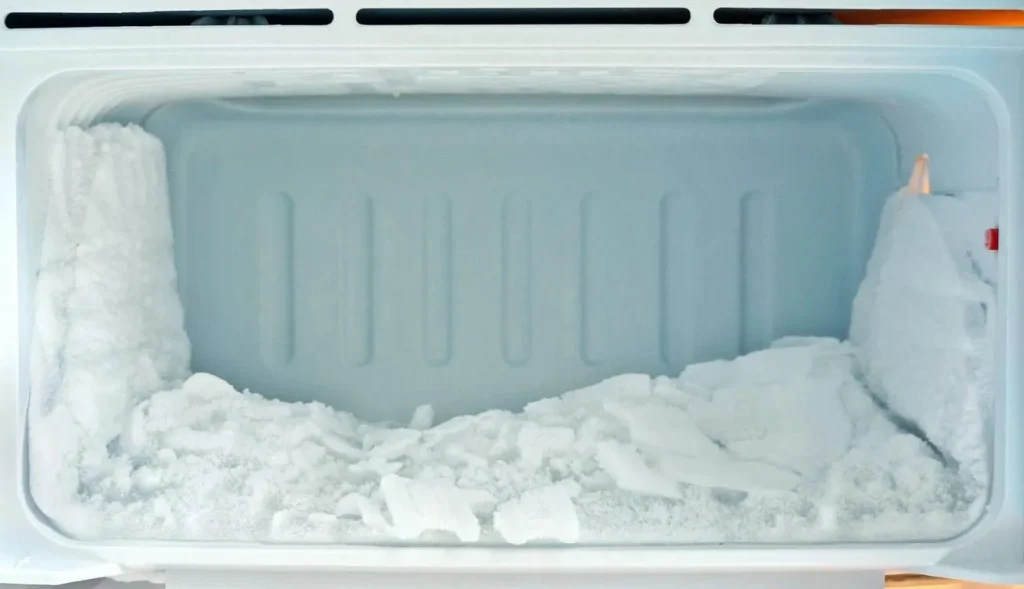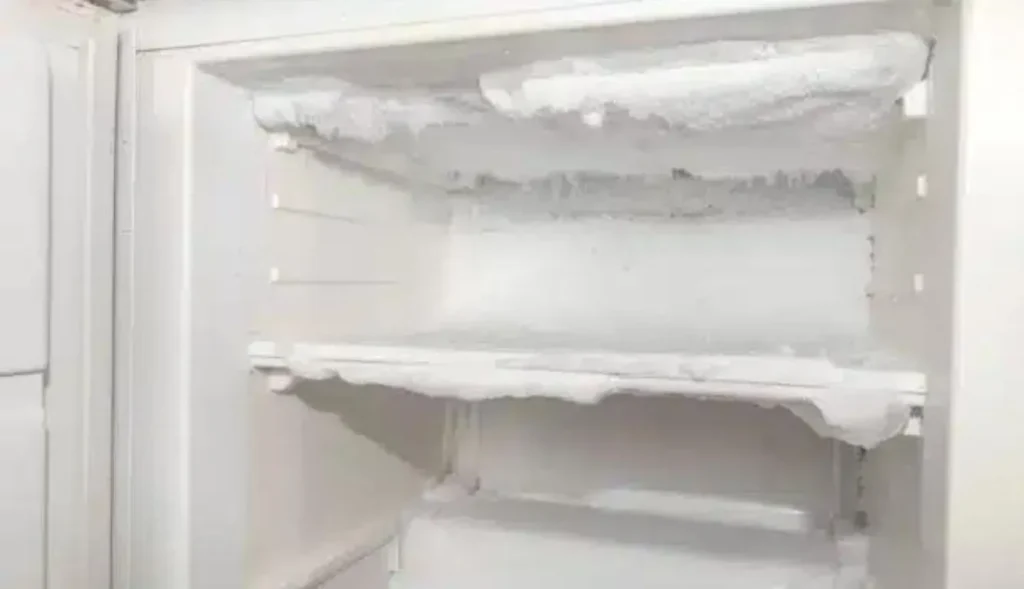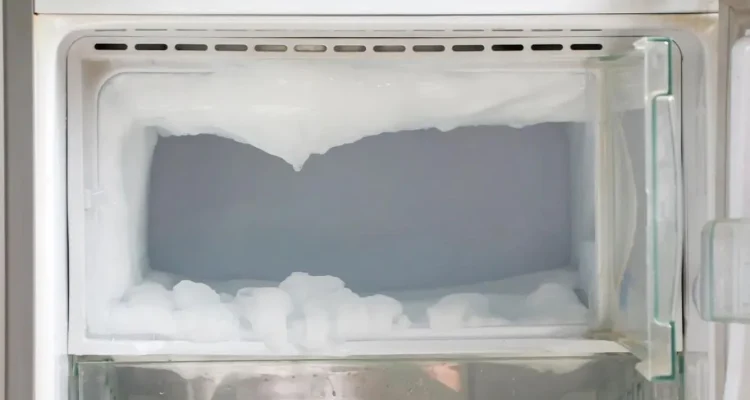What Causes a Freezer to Ice Up
Freezer icing is a common issue that many people face, often leading to decreased efficiency and potential food spoilage. Understanding what causes a freezer to ice up is crucial to maintaining its performance and prolonging its lifespan. In this article, we’ll delve into the various factors that contribute to freezer icing and provide practical tips on how to prevent it.

Understanding Freezer Icing
What Is Freezer Icing?
Freezer icing occurs when frost or ice accumulates inside the freezer, usually on the walls, shelves, or food items. This buildup can hinder the freezer’s ability to maintain the correct temperature, leading to potential food spoilage and increased energy consumption.
Why Does Freezer Icing Occur?
There are several reasons why your freezer might start to ice up. These range from simple environmental factors to more complex mechanical issues. Let’s explore some of the primary causes.
Temperature Imbalances
One of the main reasons for freezer icing is temperature imbalances. If the freezer is set too low, it can cause excessive condensation, leading to ice formation. On the other hand, if the temperature is too high, the freezer may struggle to keep things cold, causing the compressor to work overtime, which can also lead to icing.
Humidity Factors
Humidity plays a significant role in freezer icing. When warm, moist air enters the freezer, it can cause condensation. Over time, this condensation freezes, leading to ice buildup. High humidity levels in the kitchen or frequent door openings can exacerbate this problem.
Common Causes of Freezer Icing
Faulty Door Seals
How Door Seals Affect Icing
The door seals, or gaskets, are crucial in keeping warm air out of the freezer. If these seals are worn out or damaged, they can allow warm air to enter, leading to condensation and, eventually, ice formation.
Checking and Maintaining Door Seals
Regularly inspect the door seals for any cracks or tears. You can test the seal by closing the door on a piece of paper. If the paper slides out easily, it’s time to replace the seals.
Frequent Door Openings
Impact of Warm Air Ingress
Every time you open the freezer door, warm air enters, and cold air escapes. This constant exchange of air can lead to moisture buildup, which then freezes, causing ice to form.
Reducing Door Openings
To minimize icing, try to limit the number of times you open the freezer door. Plan your trips to the freezer and avoid leaving the door open for extended periods.
Poor Air Circulation
Importance of Proper Airflow
Proper airflow within the freezer is essential to maintaining an even temperature. When air circulation is obstructed, certain areas may become colder than others, leading to localized icing.
Organizing Items in the Freezer
Ensure that items are not blocking the vents inside the freezer. Proper organization not only improves airflow but also makes it easier to find what you need, reducing the time the door remains open.
Malfunctioning Defrost System
What Is the Defrost System?
The defrost system is designed to automatically melt any frost that accumulates on the evaporator coils. If this system fails, frost can build up, eventually leading to ice formation.
Signs of a Failing Defrost System
If you notice that frost is accumulating on the back wall of your freezer, it could be a sign that the defrost system is not working correctly. Other signs include a noticeable increase in freezer temperature and unusual noises.
High Humidity Levels
How Humidity Contributes to Icing
As mentioned earlier, high humidity levels can lead to condensation inside the freezer. When this moisture freezes, it creates ice. This is particularly common in humid climates or kitchens with poor ventilation.
Controlling Humidity in the Freezer
To reduce humidity levels inside your freezer, consider using a dehumidifier in your kitchen or installing ventilation fans. Additionally, ensure that the freezer door is always tightly closed.
Improper Freezer Temperature Settings
Ideal Temperature Settings
The ideal freezer temperature is around 0°F (-18°C). Setting the temperature too low can cause excessive frosting, while a higher setting may lead to inefficient cooling and potential icing.
How to Adjust Temperature Settings
Most freezers have a temperature control dial or digital settings. Regularly check the temperature with a thermometer and adjust the settings as needed to maintain the ideal temperature.
How to Prevent Freezer Icing
Regular Maintenance Tips
Performing regular maintenance on your freezer can help prevent icing. This includes cleaning the interior, checking the door seals, and ensuring proper airflow.
Ensuring Proper Door Sealing
As discussed earlier, the door seals are vital in preventing warm air from entering the freezer. Regularly inspect and replace them if necessary.
Organizing the Freezer for Better Airflow
Keep your freezer organized and avoid overloading it. This ensures that cold air can circulate freely, reducing the chances of ice buildup.
Monitoring and Adjusting Temperature Settings
Regularly monitor the freezer’s temperature and adjust it as needed. This simple step can go a long way in preventing icing.
Keeping the Freezer Dry and Humidity-Free
Take steps to reduce humidity levels in your kitchen and ensure that the freezer remains dry. This might include using a dehumidifier or improving kitchen ventilation.
When to Call a Professional
Signs That You Need Expert Help
If you’ve tried all the above tips and your freezer is still icing up, it might be time to call in a professional. Other signs that you need expert help include strange noises, inconsistent temperatures, and frequent defrosting.
Choosing the Right Repair Service
When selecting a repair service, look for qualified technicians with experience in freezer repairs. Check reviews and ask for recommendations to ensure you’re getting the best service.
FAQs
Q1: Can freezer icing damage the freezer?
Yes, excessive icing can strain the freezer’s components, leading to potential damage over time.
Q2: How often should I defrost my freezer?
If your freezer is not frost-free, it’s recommended to defrost it every 6 to 12 months or when the ice buildup reaches about 1/4 inch.
Q3: Is it normal for a freezer to ice up in the summer?
Freezer icing can be more common in the summer due to higher humidity levels, but it should still be manageable with proper maintenance.
Q4: Can a faulty thermostat cause freezer icing?
Yes, a malfunctioning thermostat can lead to improper temperature regulation, contributing to freezer icing.
Q5: What should I do if my freezer keeps icing up after repairs?
If your freezer continues to ice up after repairs, it may be time to consult with a different technician or consider replacing the appliance.

Conclusion
Freezer icing can be a frustrating issue, but with the right knowledge and preventive measures, it’s manageable. By understanding the causes and taking proactive steps, you can keep your freezer in top condition and avoid the inconvenience of ice buildup.


Congratulation!